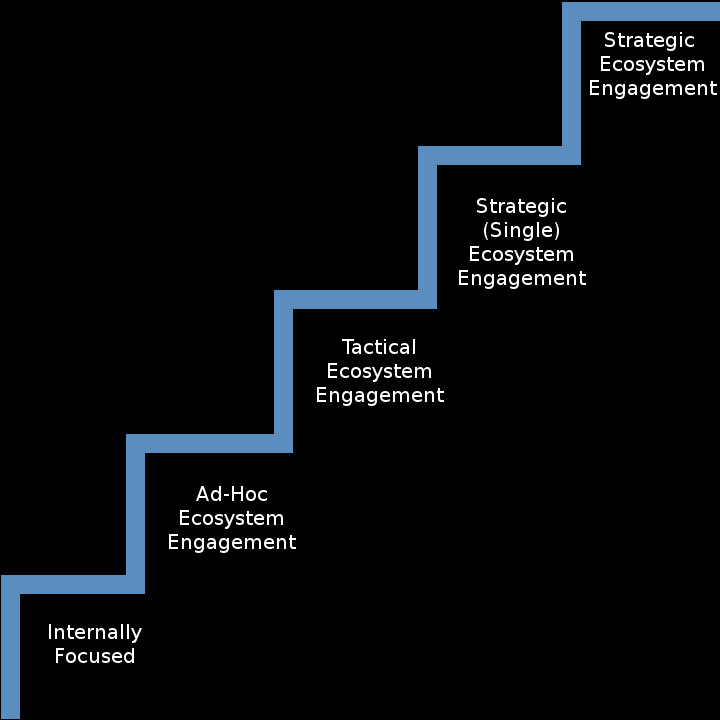Introduction to Ecosystems
The transition from internally focused to ecosystem-centric ways of working brings with it many advantages. It allows for companies to focus on their core competencies, to outsource all activities that are not strategic for the company and to employ ecosystems of third party developers to complement the core functionality provided by the company itself with extensions for specific customers and customer segments.
For the industry at large, our research shows that although the principles of core competencies, outsourcing and crowd sourced ecosystems are well understood, many companies are still quite poor at fully embracing these concepts. Many of the companies studies still have a preference to continue to do many things internally that should be outsourced and tend to manage their ecosystem partners, during the selection, the execution and the conflict resolution stages, in a largely ad-hoc and locally optimized fashion.
Ecosystem Dimension in Short
Similar to the speed and data dimensions, we have defined, again based on our research, an evolution model for how companies work with software ecosystems. As shown in figure below, starting from an internally focused company (level 1), the first interactions with the ecosystem tend to be ad-hoc and locally initiated (level 2). Once the benefits are shown the next step is to take a more centralized approach but to focus on short-term benefits and hence the company takes more of a tactical approach (level 3). Over time, one of the ecosystems that the company is part of will start to be managed in a more strategic fashion (level 4). Finally, the company adopts this strategic approach to all its ecosystems (level 5).
